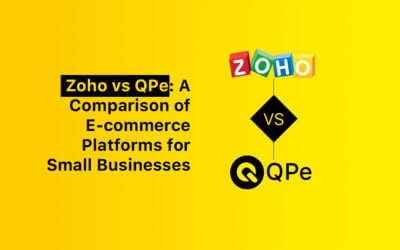In the ever- developing digital geography, having a robust online presence is crucial for the success of any e-commerce company. With millions of websites fighting for attention, it’s essential to optimise your point for search engines to ensure that potential customers can find your products or services easily. This is where E-commerce SEO acts as an important tool to enhance your online visibility and drive organic business. In this blog post, we will crawl into the fundamentals of E-commerce SEO and give practicable tips to improve your online visibility.
1. Conduct Thorough Keyword Research
Understand Your Business and industry: Before diving into keyword exploration tools, have a clear understanding of your business, products, and industry, Identify your target audience/followers and their actions, Use Keyword Research Tools.
Google Keyword Planner:
- Access the Google Keyword Planner tool through Google Advertisements.
- Enter applicable seed keywords or your website URL.
- Explore keyword ideas, search volumes, and competition situations.
SEMrush:
- Enter your sphere or a specific keyword into SEMrush.
- dissect organic results, related keywords, and contender data.
- Identify high- volume and long- tail keywords.
Ahrefs: Enter your sphere or specific keywords to dissect backlinks, organic keywords, and challengers. Use features like” Keywords Explorer” to discover keyword ideas.
Focus on Applicable Keywords: Prioritise keywords that are directly applicable to your products or services. Consider the search intent behind each keyword( instructional, nautical, transactional).
Long- Tail Keywords: Include long- tail keywords( expressions with three or further words) to capture specific and targeted hunt queries. Long- tail keywords frequently have lower competition and can attract further good business.
Keyword Grouping: Group keywords grounded on applicability and similarity. This helps in creating focused content and organising your e-commerce website structure.
- Optimise Product Pages
Optimising product pages is crucial for attracting and retaining guests, as well as perfecting machine rankings.
Unique and Compelling Product Descriptions:
Be Descriptive: give detailed information about the product, including its features, benefits, and specifications. Answer common client questions in the description.
Use Persuasive Language: Encourage guests to take action by using conclusive language. punctuate unique online selling points and crucial benefits.
High- Quality Images:
Multiple Angles: Include multiple images showcasing the product from different angles. This helps guests get a comprehensive view of what they’re purchasing.

e-commerce marketing
Zoom Functionality: apply a zoom point for guests to examine product details more nearly.
Professional Photography: Invest in professional product photography to ensure high- quality images. Clear, well- lit prints contribute to a positive user experience.
Incorporating Relevant Keywords: Keyword Research Identify applicable keywords for your products using tools like Google Keyword Planner or other SEO tools.
Natural Integration: Integrate these keywords naturally into product titles, descriptions, and meta markers. Avoid keyword filling, as this can negatively impact user experience and SEO.
Recommended Read :- Best Ways to Promote business in 2023
Mobile- Friendliness:
Responsive Design: ensure your product pages are designed to be responsive, conforming to different screen sizes. This is crucial as an increasing number of users browse and shop on mobile devices.
Page Speed: Optimise the loading speed of your product pages for mobile users. Compress images and minimise gratuitous law to enhance the mobile experience.
Easy Navigation: Simplify navigation for mobile users. Make sure buttons are easily clickable, and the overall layout is user-friendly on lower defences.
User Reviews and witnesses:
Social Proof: Include client reviews and witnesses on your product Pages. Positive feedback builds trust and encourages potential guests to make a purchase.
Interactive rudiments: Allow guests to leave reviews and ask questions directly on the product page. This engagement can contribute to a sense of community around your products.
- Create an SEO-Friendly URL Structure:
A clean and concise URL structure not only aids search machines in understanding your point but also makes it user-friendly. Use descriptive URLs that include relevant keywords. Avoid using general parameters and symbols that can confuse both search engines and users.
- Prioritise Mobile Optimization:
Prioritising mobile optimization for your e-commerce shop and point is crucial in moment’s digital geography. Then are some crucial way and considerations to insure your website is mobile-friendly and optimised for a flawless user experience :
Responsive Design: ensure your website employs a responsive design that adapts to different screen sizes and judgments . This helps give a harmonious and user-friendly experience across various devices, including smartphones and tablets.
Mobile- Friendly Navigation: Simplify navigation for mobile users. Use a clear and concise menu structure, and consider enforcing a mobile-friendly navigation pattern similar to a hamburger menu to save screen space.
Page load Speed: Optimise page load times for mobile devices. Compress images, minimise HTTP requests, and influence cybersurfer caching to enhance the speed of your mobile runners. Google considers runner speed as a ranking factor, so faster loading times can appreciatively impact your SEO.
Optimised Content: Format your content for mobile consumption. Use concise and engaging captions, break up the textbook into digestible sections, and ensure that images and videos are optimised for mobile viewing.
Mobile- Friendly Forms: Streamline forms and input fields to make them mobile-friendly. Minimise the number of needed fields, use autofill features where possible, and ensure that form submission is easy and effective on mobile devices.
Mobile SEO: Apply mobile SEO best practices. Use mobile-friendly meta markers, ensure that your mobile and desktop performances have the same content( to avoid SEO issues), and consider enforcing structured data markup for mobile users.
Mobile Analytics: use mobile analytics to gain insights into user behaviour on mobile devices. This data can help you identify areas for enhancement and make data- driven opinions to enhance the mobile user experience.
- Build High-Quality Backlinks
Create High-Quality Content: Develop valuable, relevant, and shareable content on your e-commerce site. This could include in-depth product reviews, how-to guides, infographics, or industry insights.
Ensure your content is well-researched, engaging, and provides a solution or valuable information to your target audience.
Guest Posting: Identify reputable blogs or websites in your niche that accept guest posts. Reach out to them with well-crafted pitches showcasing your expertise and proposing relevant topics.
When guest posting, include a link back to your e-commerce site in the author bio or within the content (if allowed by the host site’s guidelines).
Influencer Outreach: Identify influencers in your industry who may be interested in your products. Reach out to them and propose collaborations, such as product reviews, sponsored content, or joint ventures.

e-commerce SEO tips
When influencers mention or review your products, they often include a link to your site, providing valuable backlinks.
Partnerships and Collaborations: Forge partnerships with other businesses in your industry. This can include suppliers, complementary product providers, or even local businesses.
Cross-promote each other’s content, products, or services, and include backlinks where relevant.
Broken Link Building: Identify broken links on reputable websites within your niche. Reach out to the site owner or webmaster, informing them about the broken link, and suggest your content as a replacement.
Offer a valuable resource that would benefit their audience, and include a link back to your relevant content.
- Optimise for Local SEO
For brick-and-mortar stores or businesses targeting a specific geographic area, local SEO is paramount. Ensure your business is listed on Google My Business, use local keywords, and encourage customer reviews. Local optimization can significantly boost your visibility in local search results.
- Improve Website Loading Speed
Improving e-commerce website loading speed is essential for providing a positive user experience and maintaining good search engine rankings. Here are some additional tips to help you enhance your website’s loading speed:
Minimise HTTP Requests: Reduce the number of elements on a page, such as images, scripts, and stylesheets, as each of these requires a separate HTTP request. Combine and minify files wherever possible to decrease the overall number of requests
Enable Browser Caching: Set up caching headers to instruct browsers to store certain files locally. This reduces the need for users to download the same files repeatedly when they visit your site, improving load times for returning visitors.
Optimise CSS Delivery: Optimise the delivery of CSS by placing stylesheets at the top of the HTML document and JavaScript at the bottom. This ensures that styles are applied quickly, giving users a better initial impression of your site.
Implement Lazy Loading: Employ lazy loading for images, which means images are only loaded as they come into the user’s viewport. This reduces the initial load time and saves bandwidth for users who don’t scroll through the entire page.
Minimise Server Response Time: Optimise your server infrastructure to ensure quick response times. This may involve upgrading your hosting, optimising database queries, and employing server-side caching.
Content Delivery Network (CDN): Use a CDN to distribute your e-commerce website‘s static assets (images, stylesheets, scripts) across multiple servers worldwide. This reduces latency and ensures that users can access your content quickly regardless of their geographic location.
Must Read :- How D2C brands can leverage ONDC to setup Personalized selling Platform
- Monitor and Analyze Performance
Finally, regularly monitor your site’s performance using tools like Google Analytics. Track key metrics such as organic traffic, bounce rates, and conversion rates. Use this data to refine your SEO strategy, identifying what works and adapting to changes in search engine algorithms.
In conclusion, mastering E-commerce SEO is essential for enhancing your online visibility and attracting the right audience. By incorporating these tips into your strategy, you’ll not only improve your search engine rankings but also create a more user-friendly and engaging experience for your customers. Stay informed about the latest SEO trends, adapt to changes, and watch your e-commerce business thrive in the digital realm.



